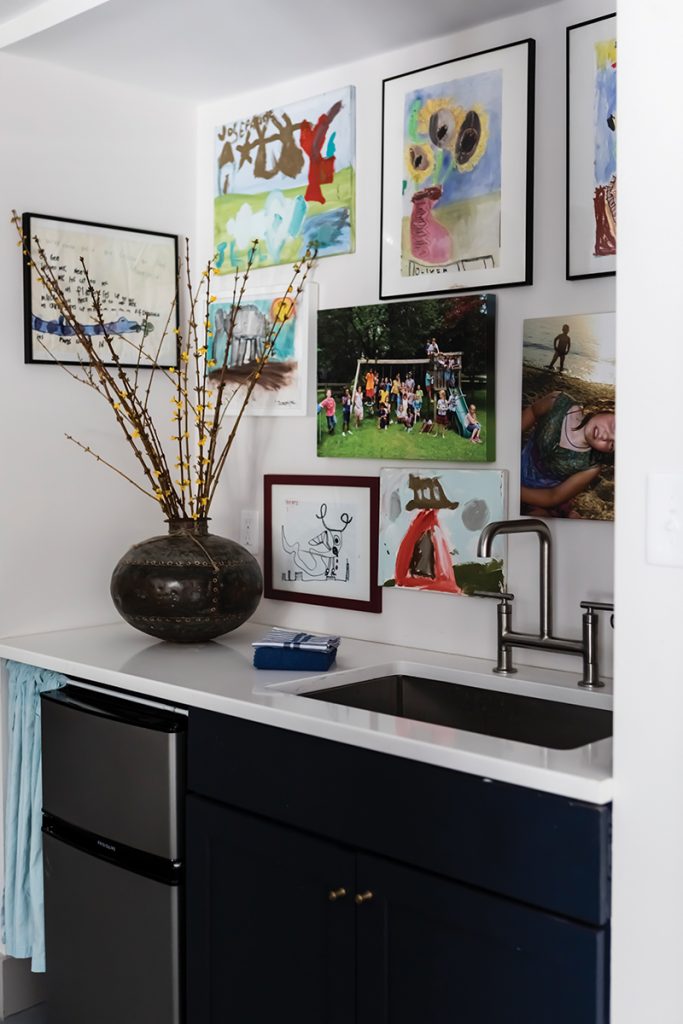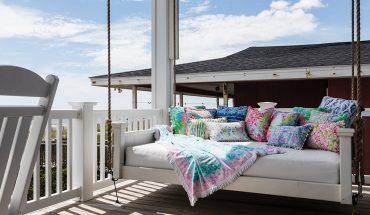This interior designer likes to test out her decorating ideas inside the 1920s Duke Park home she renovated for her family.
by Ayn-Monique Klahre | photography by Catherine Nguyen
For Sheila O’Rourke, her home is not just a place to live, but a spot to test her design ideas. “I switch things around constantly — l’ll hang up a light and decide I want something bigger, or in brass — I’m always trying new things,” she says. “I’m an eternal learner.”
In fact, the one constant in all of it might be the abundant use of her favorite color. “I’m attracted to blue, I always have been,” O’Rourke says. “I love to use a whole mixture of different blues, all the variations of blue and blue-green. I used to try to not use it too much, but over time I’ve found that the more I use it, the more it acts as a neutral.”
O’Rourke is the interior designer behind Little Mangum Studio. She moved to this 1926 home in the leafy Duke Park neighborhood, near Durham’s downtown, about 10 years ago after living in New York City, Washington, D.C., and San Francisco. “I was a little nervous, because I’d always lived in bigger cities — but I had these three little kids, so I wanted a yard and some space,” she says.
When O’Rourke and her family moved in, the single-story home felt crowded with small rooms. “There was no through view, everything was very shut off,” says O’Rourke. But she understood its potential. “I could see there was just so much space if we removed some walls and changed where some doors were,” she says. So she opened things up to help spaces relate to each other and improve the flow. Now you can see all the way from the dining room through the kitchen from the front door. “It feels quite generous,” she says.
During the pandemic, O’Rourke did another major renovation. She added a staircase to the main part of the house so that they could access the walk-out basement, which previously could only be reached through the garage. She then redid the whole downstairs space, creating three bedrooms, a hangout area, and a separate one-bedroom apartment. It nearly doubled the usable square footage of the house.
“This house started as a two-bedroom, and now it’s grown into a six-bedroom!” she says.
All along the way, O’Rourke’s been tweaking the interiors — for fun and for research for her work. In the dining room, for example, O’Rourke painted the trim a rich gray, then covered the upper walls with a grasscloth wallpaper and the bottoms with paper with a watercolor-inspired pattern.
“Painting the trim a dark color was something I’d suggest to clients, but they’d be hesitant — so I did it myself, and now I can show them a picture of it and they get it,” she says. For ideas about how to hang pictures, she’ll show clients her own gallery walls, which often feature thrift-store purchases mixed in with pieces by family members or local artists.
“Any time I find an original oil painting, I scoop it up!” she says. She wallpapered her bathroom in a bold, unusual print, she’s recovered chairs, and she’ll test out materials to make sure they work.
What she chooses often reflects the places she’s lived and traveled, like a painting she found at the Habitat for Humanity ReStore of a cypress tree on a coast. “It 100% looks like California, where I used to live,” she says. She has an eye for budget finds, but will splurge when she truly loves something, like the floor tiles in her mudroom: “I pick and choose what I invest in, and these make me happy every single day!”
With all the experimentation, her decor is ever-evolving. “I don’t buy things when I need them, I buy them when I see them — I’m always on the lookout for things for my home,” she says. “My home is my canvas, my creation.”
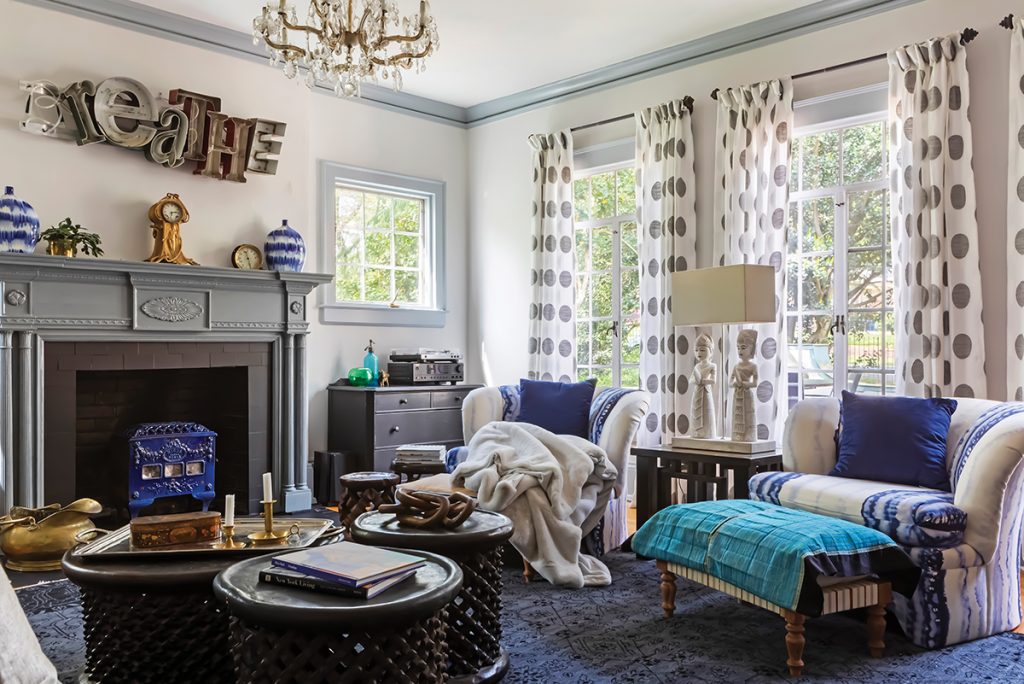
Homeowner Sheila O’Rourke has an eye for interesting decor. She found her accent chairs, which she reupholstered in watercolor-inspired fabric, at the Habitat for Humanity ReStore and the Parisian stove inside the fireplace at Leland Little Auctions. The 1940s crystal chandelier came from her parents’ beach house in New Jersey.
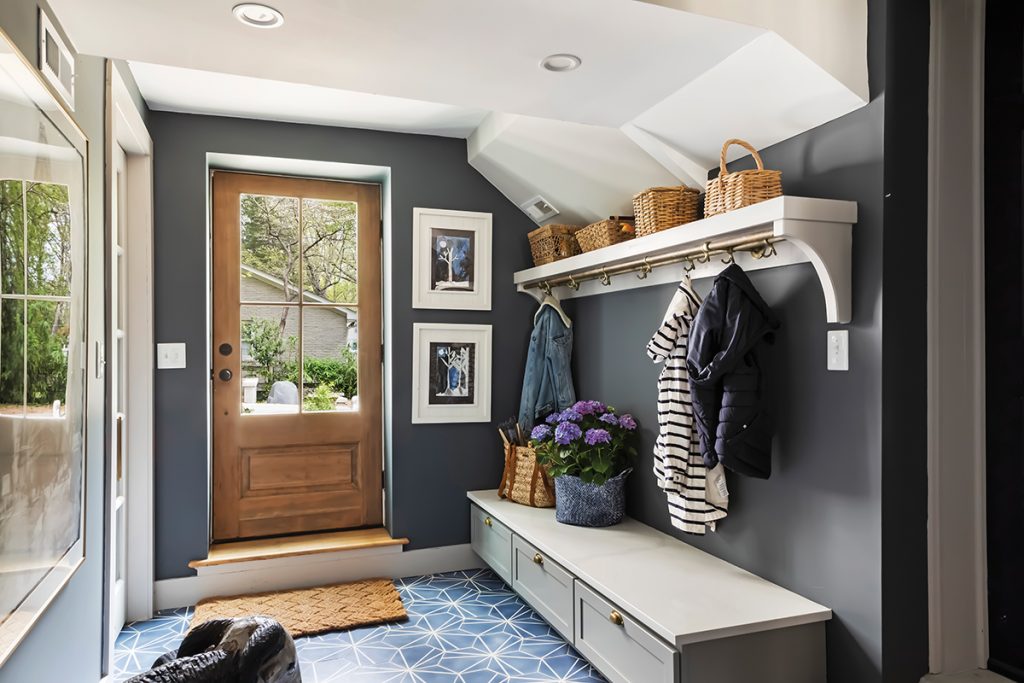
During her most recent renovation, O’Rourke added the mudroom. “We used to walk in the front door and just drop everything — it was a mess,” she says.
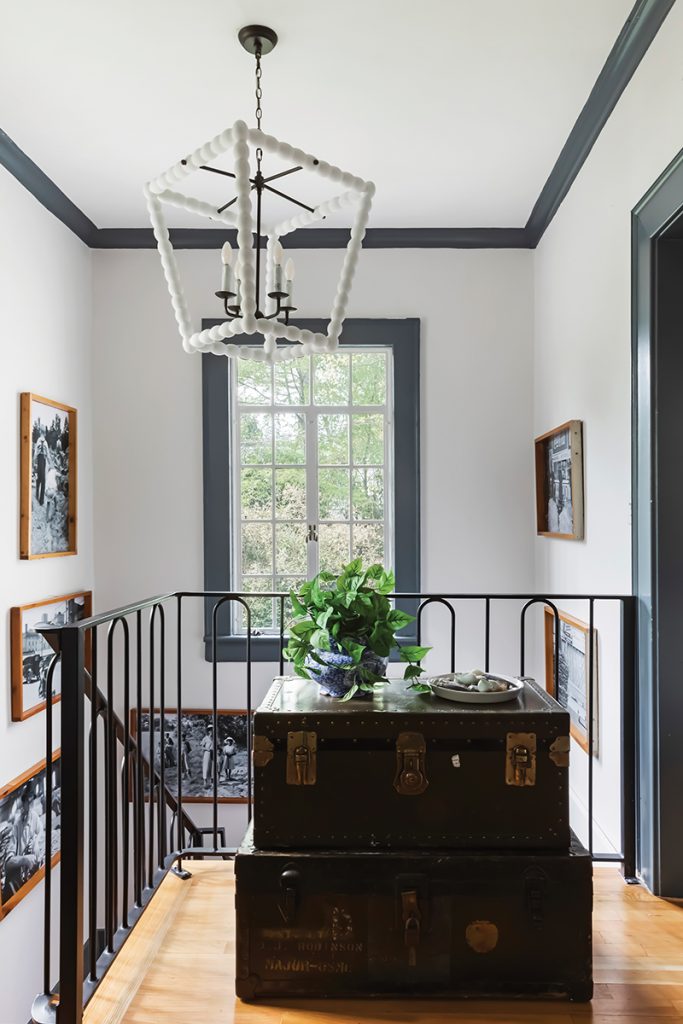
The also added stairs to the basement within the main part of the house. For art, O’Rourke printed out photos from the Library of Congress depicting Durham in the 1930s, then decoupaged them to boxes she found at The Scrap Exchange. The trunks are vintage finds.
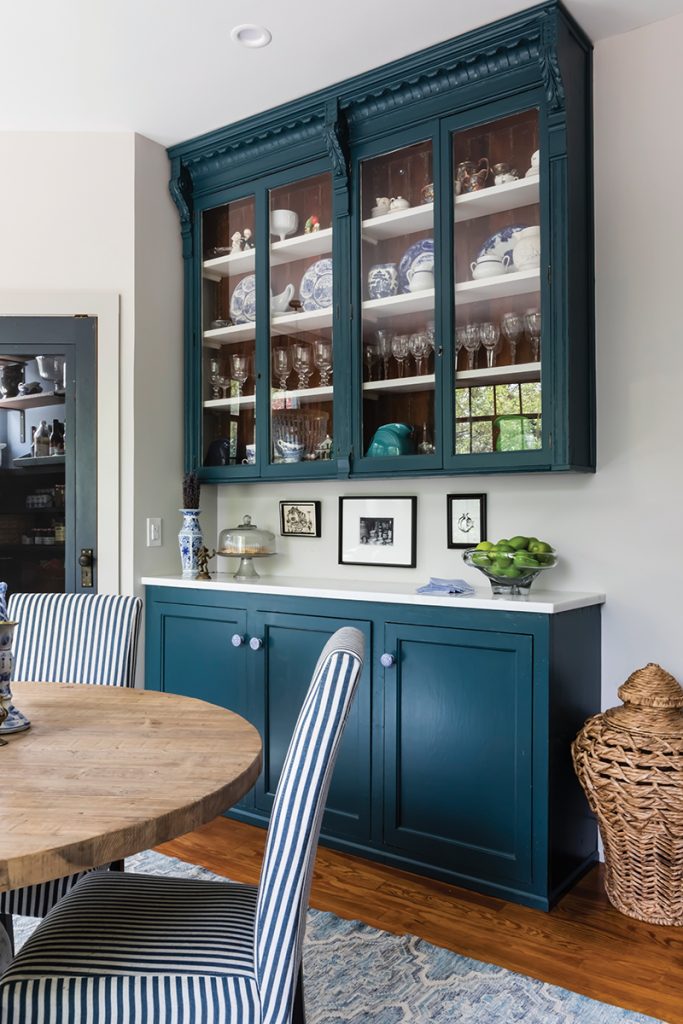
O’Rourke found the upper cabinet at an architectural salvage shop in Brooklyn when she lived there and used it as a bookcase for years. When she moved into this house, she happened upon a base cabinet the exact same width — it felt like fate. “I put a marble top on it and painted them the same color, and now I’ll just have to leave it here forever,” she laughs.
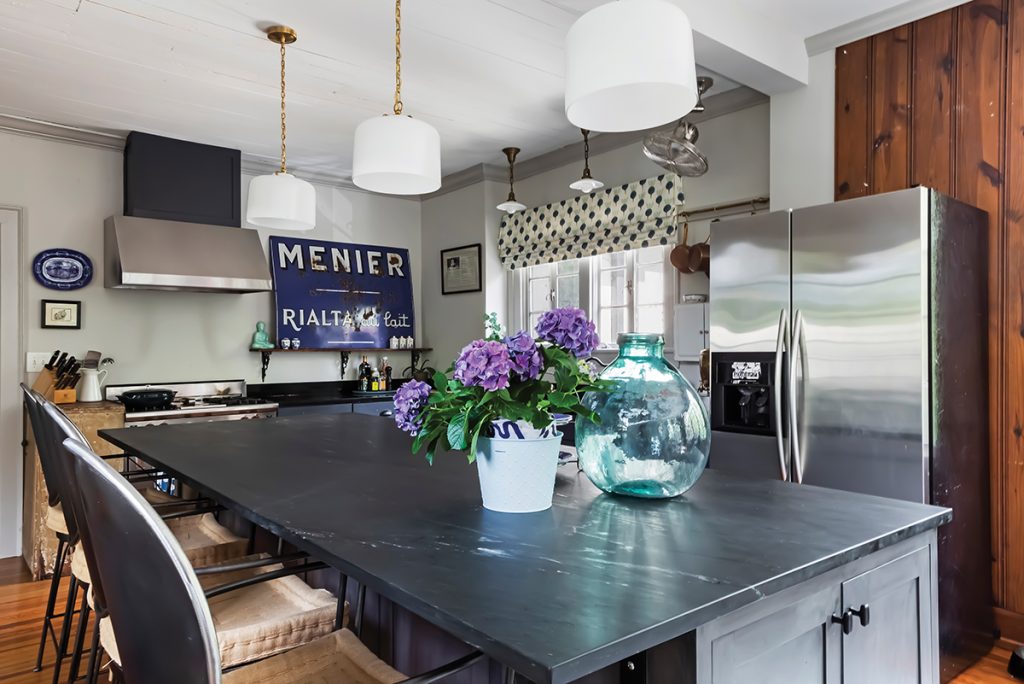
O’Rourke designed the kitchen island around a 10-foot-long slab of soapstone. “I got it for myself so I could feel comfortable recommending it to clients,” she says, noting that it’s held up well for three years. She particularly loves the perfectly round backs of the counter chairs, which she bought even before her kitchen renovation. “I stored them for two years because I loved them so much,” she says.

The breakfast area, which incorporates a daybed, is a favorite spot: “This is where everyone ends up hanging out.”
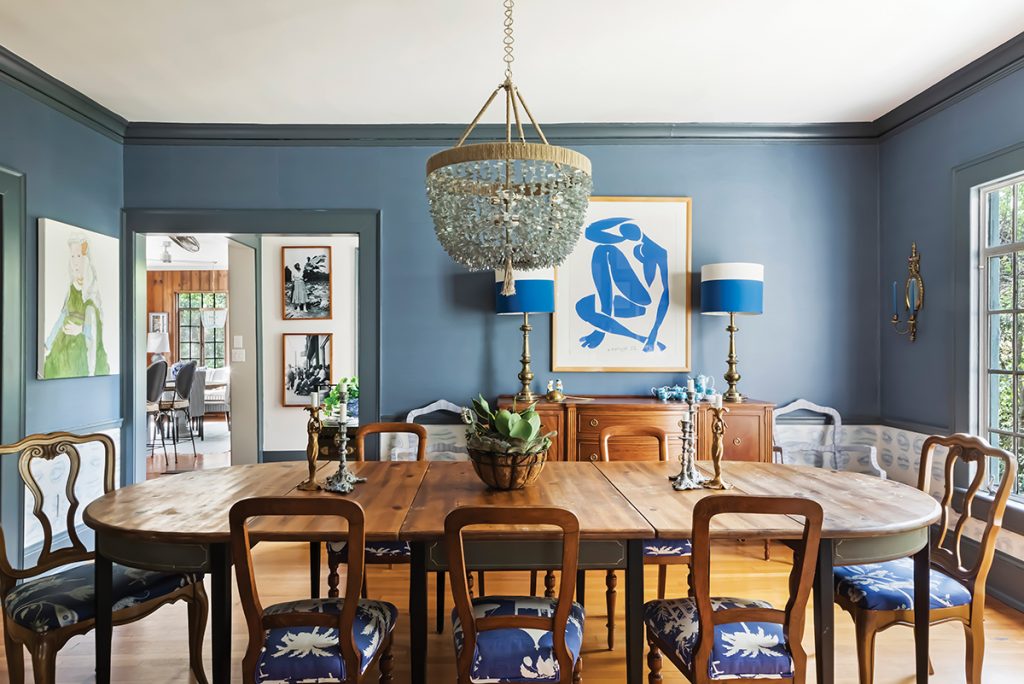
The dining room is “dead center” of the house, and O’Rourke painted it a dark color as an anchor. The huge table is the centerpiece of the home. “It signifies my whole vibe for this house, it’s a place of welcome — this is where we have people over for Thanksgiving, or I host book club,” she says. Her art is a mix of Goodwill finds, items bought at auction, or personal pieces, like a portrait of a woman by her cousin.
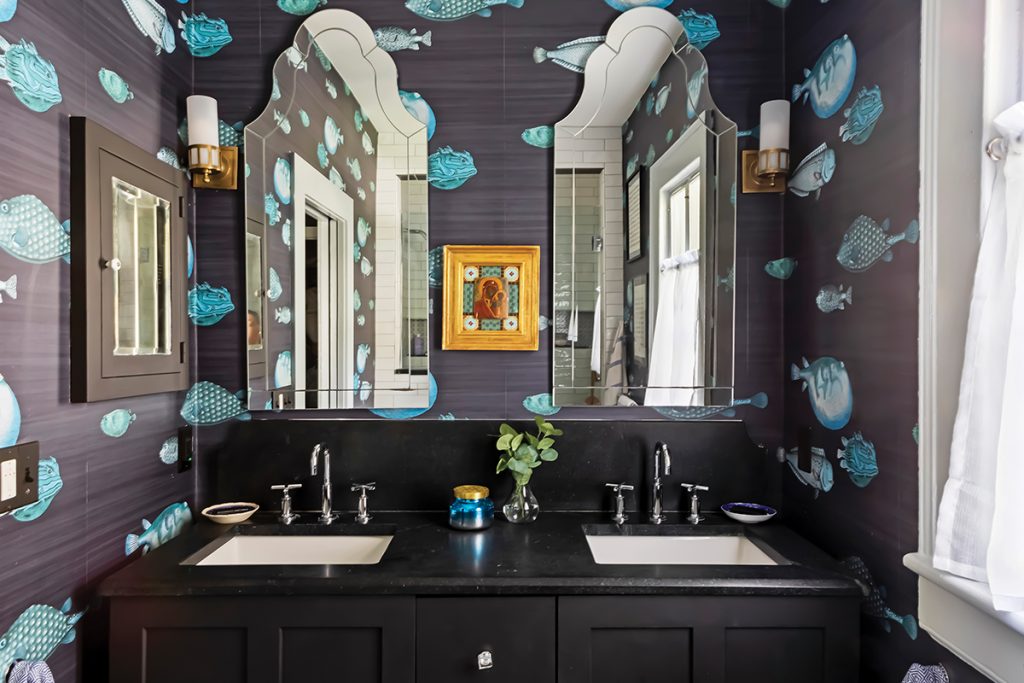
O’Rourke put the fish wallpaper in her primary bath. “I saw them in a magazine and had to have them,”
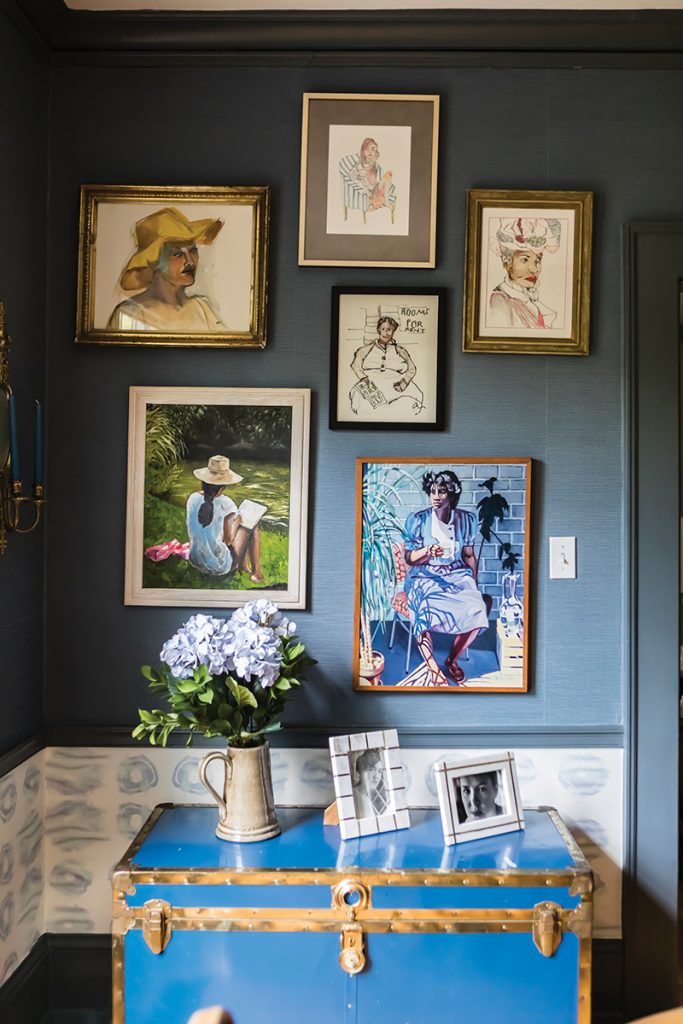
“I pick up art all over the place, but it has to have something specific that speaks to me,” she says.
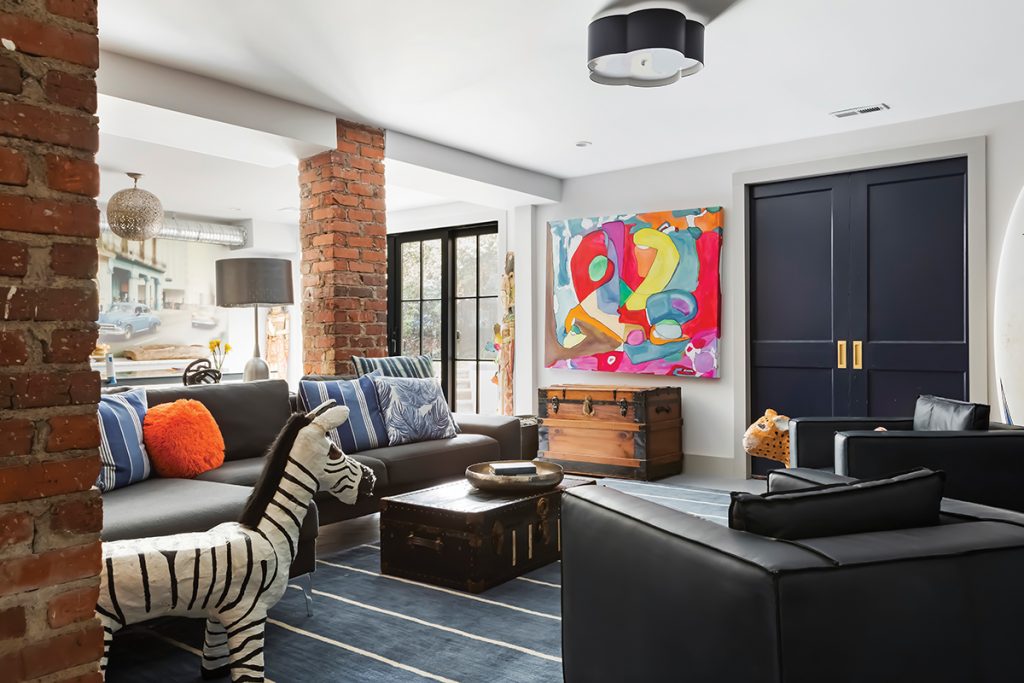
The living area downstairs is a favorite hangout spot for O’Rourke’s three teenagers. She found the animal-shaped benches at the ReStore and gave one to each kid for Christmas one year; now they serve as end tables. The colorful painting is by Raleigh artist Kerry Burch.
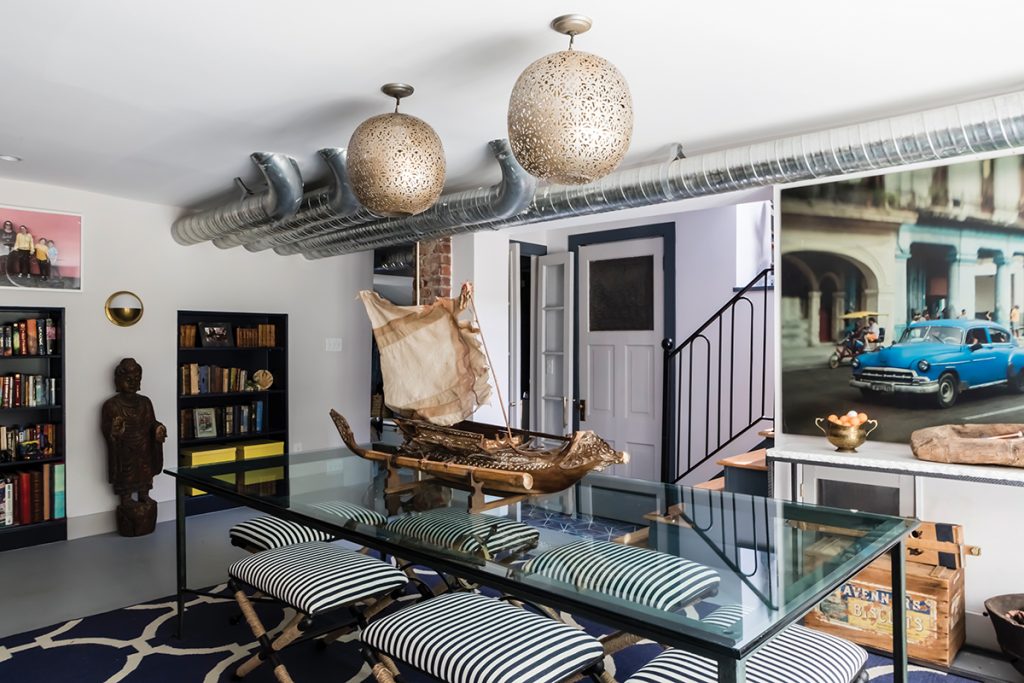
She bought the large glass table at Leland Little Auctions in Hillsborough to be used for crafts or as a ping-pong table. “The movers said they’d never moved anything this heavy before,” she laughs.
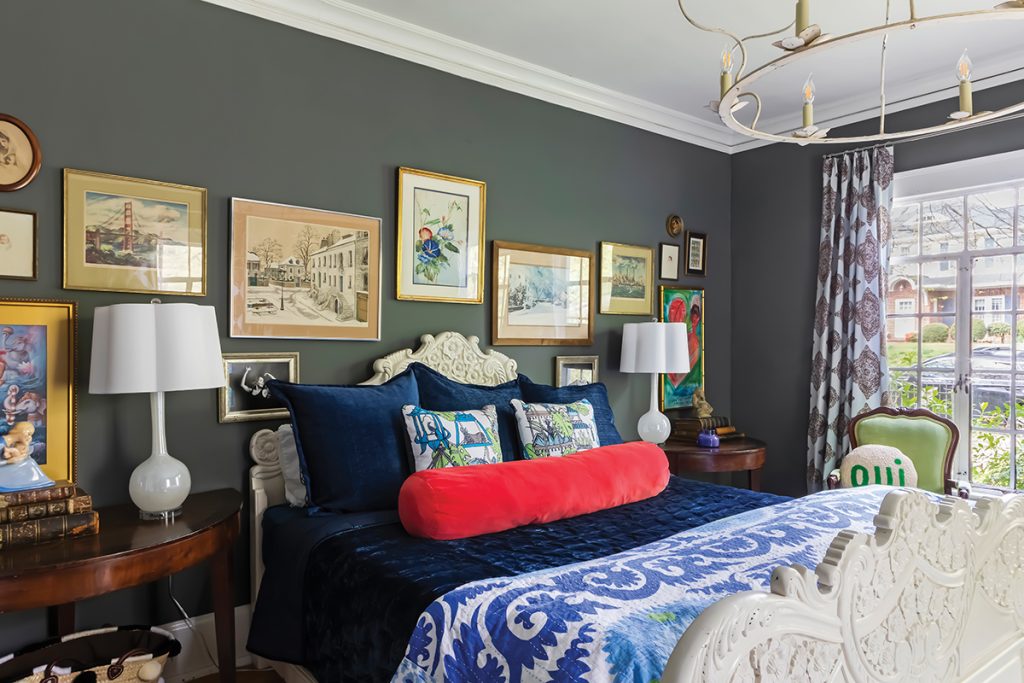
The gray-green walls in her bedroom are one of the things she likes to show clients. “I love using a dark color in a bedroom,” she says. The art in here is her “most personal” collection, including pictures from her grandparents, pictures of her kids and artwork depicting some of the places they’ve lived.
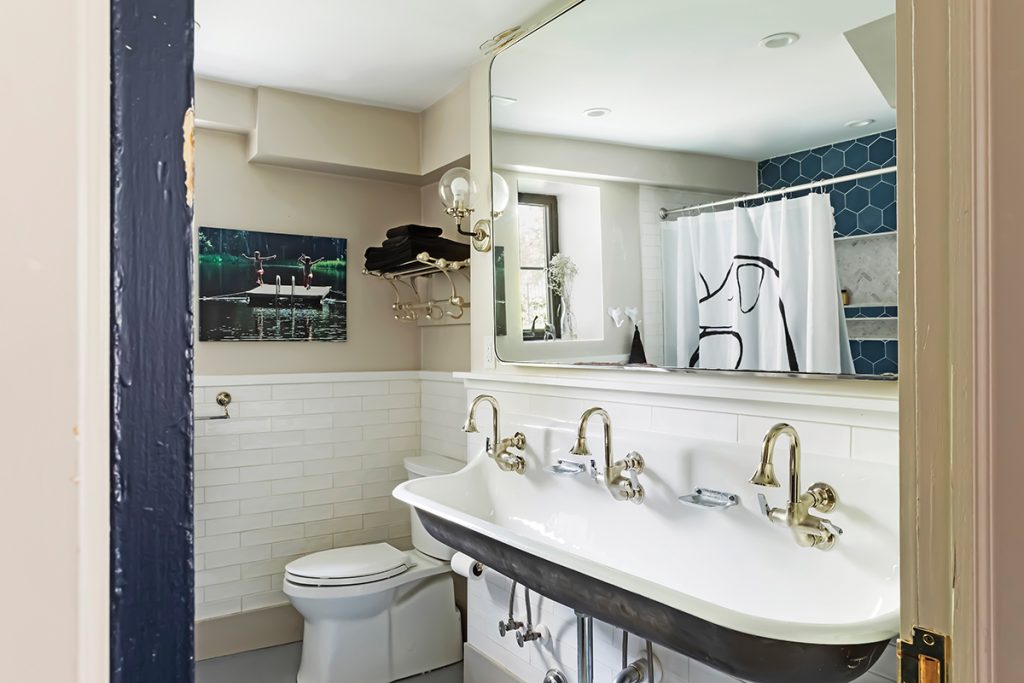
When they redid the basement, they added this trough sink to work for the three bedrooms down there.
This article originally appeared in the April 2024 issue of WALTER magazine.

